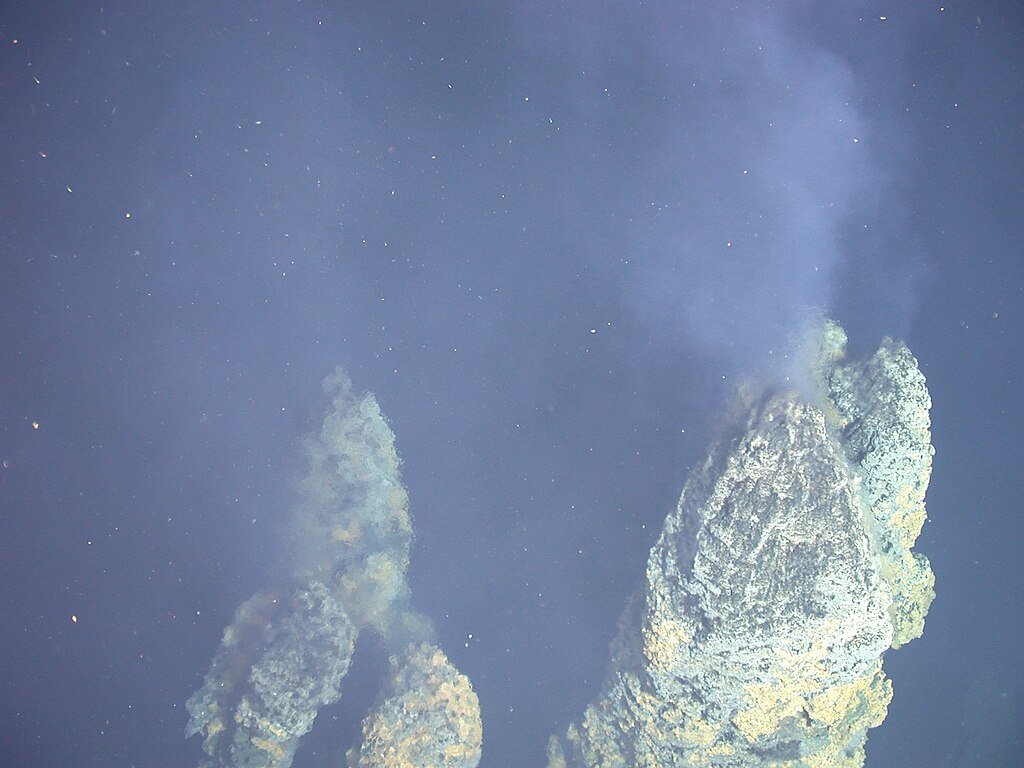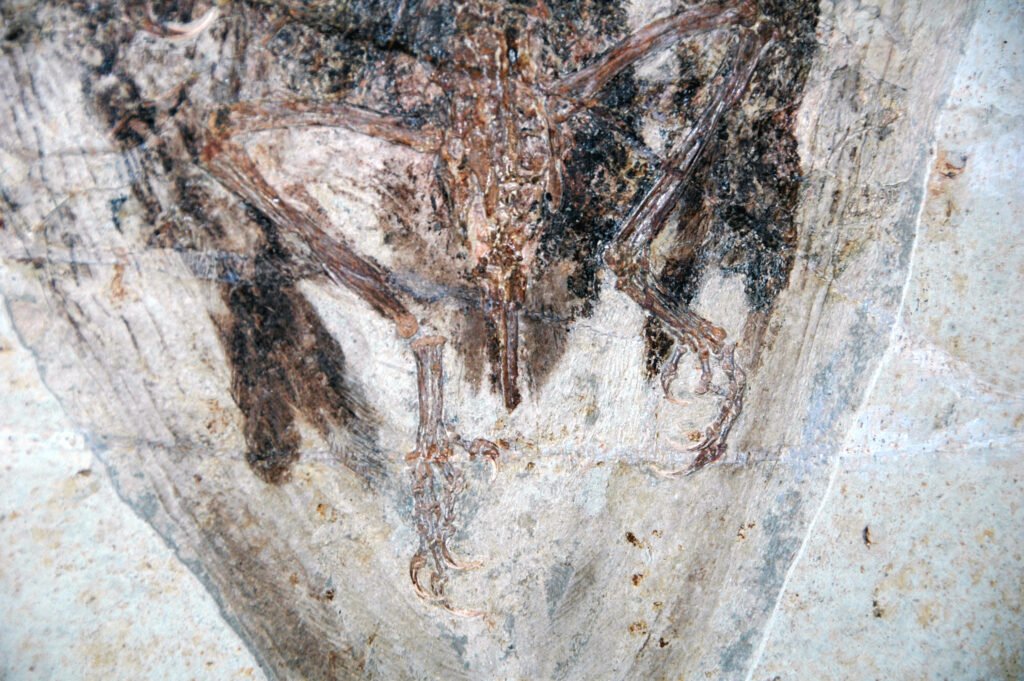Imagine a world of darkness, where sunlight never reaches and the pressure is crushing—yet in this abyss, life flourishes in dazzling forms. Deep beneath the ocean’s surface, vents spew scalding, mineral-rich water into the cold, inky black. These hydrothermal vents are like underwater volcanoes, but instead of destroying, they spark entire ecosystems. It’s a place where fire seemingly meets water, and the impossible becomes reality. How can life thrive in such a hostile world? The answer is both astonishing and inspiring, revealing secrets about resilience, adaptation, and the incredible creativity of nature.
The Discovery That Changed Our View of Life

In 1977, scientists stumbled upon hydrothermal vents while exploring the Galápagos Rift. Until then, it was believed that all life depended on sunlight. But the vents told a different story—one where creatures thrived in total darkness, relying not on photosynthesis but on a process called chemosynthesis. This discovery shook the scientific world and forced a rethinking of life’s basic requirements. Suddenly, the idea that life could exist in the most extreme environments became not just possible, but undeniable. The vents revealed a hidden world, teeming with bizarre creatures, and forever changed our understanding of what it means to be alive.
What Exactly Are Hydrothermal Vents?

Hydrothermal vents are openings on the ocean floor where seawater seeps into cracks, gets superheated by magma, and then gushes back out loaded with minerals. Think of them as underwater geysers, but far more dramatic. The water that emerges can reach temperatures of over 400°C (752°F), hot enough to melt lead, yet it doesn’t boil because of the immense pressure. This superheated water is packed with chemicals like hydrogen sulfide, a compound that would be deadly to most surface life. Yet, for the creatures living here, these chemicals are a source of energy and growth. The vents create a stark, beautiful landscape—a rocky, steaming undersea wonderland.
The Chemistry of Life Without Sunlight
Instead of using sunlight, organisms near hydrothermal vents depend on chemosynthesis. This remarkable process allows bacteria to convert toxic chemicals from the vents into food and energy. These bacteria are the foundation of the vent ecosystem, much like plants are on land. They form mats on rocks and live inside the tissues of animals, supplying them with nourishment. This is a world where energy is drawn from the Earth itself, not the sky—a powerful reminder that life finds a way, even in the darkest places. The chemistry here is so unusual that it continues to fascinate scientists searching for life on other planets.
Meet the Residents: Astonishing Adaptations

The creatures living around hydrothermal vents are nothing short of extraordinary. Giant tube worms, some reaching over six feet long, thrive in these conditions, lacking mouths and digestive systems entirely. Instead, they rely on symbiotic bacteria to feed them. There are also ghostly white crabs, eyeless shrimp with light sensors on their backs, and fish that seem almost alien in form. Many animals have developed special proteins and membranes to withstand the heat and poisonous chemicals. Their colors can be shocking—deep reds, pure whites, and shimmering silvers—all adapted for this unique environment.
The Power of Symbiosis

One of the most breathtaking features of vent ecosystems is the intricate partnerships between different species. Tube worms, for example, host bacteria inside their bodies that convert vent chemicals into food. In return, the worms provide a safe home and a steady supply of chemicals for the bacteria. This relationship is a perfect example of symbiosis, where two very different organisms support each other’s survival. Other animals, like certain shrimp and crabs, graze on bacterial mats or prey on other vent dwellers, creating a tightly knit web of life. These partnerships are essential for thriving in such an extreme environment.
Hydrothermal Vents: Nature’s Chemical Factories

The vents are constantly pumping out minerals and chemicals, shaping the very landscape around them. Black smokers, named for their dark, smoky plumes, build towering chimneys of metal-rich deposits. These structures grow surprisingly fast, sometimes inches in a single day, and can reach heights of over 40 feet. The minerals include valuable metals like copper, zinc, and even gold. This constant chemical activity doesn’t just support life—it creates new habitats, offering surfaces for organisms to cling to and places for new communities to form. The vents are a vivid example of nature’s ability to build something beautiful from the most unlikely ingredients.
Life Cycles and Renewal

Hydrothermal vent ecosystems are dynamic and ever-changing. Vents can suddenly appear or disappear as tectonic plates shift and magma moves beneath the seafloor. When vents die, so do their local communities, but new vents spark fresh bursts of life somewhere else. Many vent species have evolved ways to quickly colonize new sites, using larval stages that drift in the currents until they find a suitable home. This cycle of destruction and rebirth is a dramatic dance, reminding us that even in the most stable-seeming places, change is constant. It’s a powerful metaphor for resilience in the face of adversity.
Connections to the Wider Ocean

Though vents might seem isolated, they have far-reaching impacts on the broader ocean. The chemicals and heat they release can alter water chemistry over vast distances, supporting deep-sea life well beyond the vent fields. Some vent species travel surprisingly long distances as larvae, linking distant communities and helping spread genetic diversity. In a sense, hydrothermal vents act as biological stepping stones across the ocean floor, connecting habitats that would otherwise be separated by miles of empty sea. These connections are crucial for the survival of vent species over time.
Clues to the Origins of Life

Many scientists believe that life on Earth may have begun in places much like hydrothermal vents. The combination of heat, minerals, and water creates ideal conditions for the formation of complex molecules—the building blocks of life. Laboratory experiments have shown that amino acids and other vital compounds can form in vent-like conditions. This idea has profound implications, suggesting that life could arise wherever similar vents exist, even on other planets or moons. The vents are not just windows into the deep; they are time machines, offering glimpses into Earth’s ancient past and the very origins of life itself.
Impacts of Exploration and Human Activity

As technology advances, humans are increasingly exploring and even mining hydrothermal vent areas for their rich minerals. While this offers economic opportunities, it also raises serious questions about the potential harm to these fragile ecosystems. The creatures that live here are often slow-growing and highly specialized, making them especially vulnerable to disturbance. Scientists and conservationists are working to balance the need for resources with the need to protect these extraordinary habitats. The choices we make today will determine whether vent ecosystems continue to thrive or become silent casualties of progress.
What Can Hydrothermal Vents Teach Us?
Hydrothermal vents are a testament to life’s tenacity and creativity. They show us that even in the harshest, most unlikely places, life finds a way to adapt and flourish. The vents challenge our assumptions about where life can exist and what it needs to survive. They remind us that the world is full of surprises, waiting just beyond the edge of our knowledge. As we explore the deep sea, we learn not only about these strange ecosystems but also about ourselves—our curiosity, our ingenuity, and our responsibility to protect the wonders we discover.




